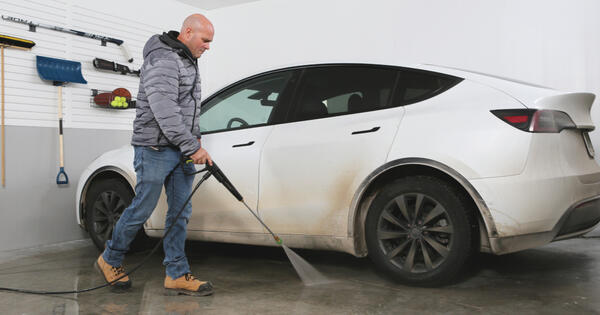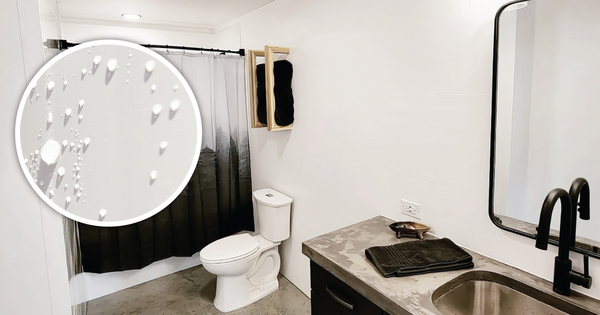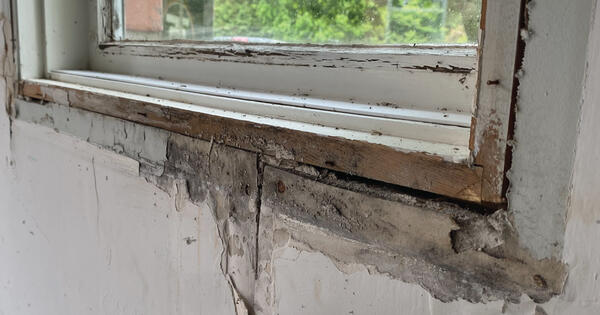Protecting your home from moisture damage is a top priority for any homeowner, and selecting the appropriate waterproof sealant plays a crucial role in this endeavor.
Whether you're sealing cracks in your basement walls or waterproofing your outdoor deck, choosing the right sealant can make all the difference in preserving the integrity of your home's surfaces. In this comprehensive guide, we'll delve into the intricacies of waterproof sealants, providing you with valuable insights to make informed decisions for your home improvement projects.



When to Use Waterproof Sealants
Waterproof sealants should be used whenever you need to protect surfaces from moisture damage. Here are some common scenarios:
- Sealing cracks and gaps: Use sealants to fill in cracks and gaps in surfaces like walls, floors, or countertops to prevent water from seeping in and causing damage.
- Outdoor projects: Apply sealants to outdoor surfaces such as decks, patios, or fences to protect them from rain, snow, and UV exposure.
- Bathroom and kitchen: Seal joints and seams around sinks, showers, and countertops to prevent water from leaking into walls or cabinets, which can lead to mold and rot.
- Basement waterproofing: Seal basement walls and floors to keep out groundwater and moisture, preventing issues like dampness, mold, and mildew.
- Window and door frames: Seal around window and door frames to prevent drafts and water intrusion, which can lead to energy loss and water damage.
Overall, waterproof sealants are essential for maintaining the integrity and longevity of various surfaces in and around your home.
Understanding Waterproof Sealant Types
When it comes to safeguarding your home against moisture intrusion, understanding the various types of waterproof sealants available is key. As a homeowner, there are three types you need to know about:
- Silicone Sealants: Silicone sealants are renowned for their exceptional flexibility and durability, making them an ideal choice for sealing joints and gaps in wet areas such as bathrooms and kitchens. They exhibit excellent resistance to UV radiation and extreme temperatures, making them equally suitable for outdoor applications.
- Polyurethane Sealants: Polyurethane sealants offer superior adhesion to various surfaces, including wood, concrete, and metal. Their high tensile strength makes them perfect for high-traffic areas, and they boast resistance to abrasion, chemicals, and weathering, making them an excellent choice for outdoor use.
- Acrylic Sealants: Acrylic sealants are favored for their quick-drying nature and ease of application. They are suitable for both interior and exterior use on non-porous surfaces like tiles and glass. While offering good flexibility, acrylic sealants may require more frequent reapplications compared to silicone or polyurethane sealants.
Factors to Consider When Choosing a Waterproof Sealant
Before selecting a waterproof sealant for your project, it's essential to consider several factors to ensure optimal results:
- The Surface Type: When picking a waterproof sealant, consider the surface you're sealing. Different sealants are made for different materials. For example, if you're sealing concrete, you'll want a strong sealant. If it's wood, look for one that protects from both water and the sun.
- The Application Method: Consider how you'll apply the sealant. A caulking gun is good for small spaces, while a brush or roller works better for larger areas. This helps you apply the sealant smoothly and avoid wasting any.
- Flexibility Requirements: Make sure the sealant can move with the surface. Some areas shift with temperature changes or settling. You need a flexible sealant to prevent cracks or peeling over time.
- Weather Resistance: Consider your local weather, especially when buying a waterproof sealant for an exterior application. Choose a sealant that can handle sun, rain, and temperature changes. This ensures it'll keep your surfaces protected for a long time.

Tips for Applying Waterproof Sealants to Projects
To achieve optimal results when applying waterproof sealant, keep these tips in mind:
- Surface Preparation: Start by thoroughly cleaning the surface to remove dirt, grease, and debris, ensuring proper adhesion of the sealant. Repair any cracks or gaps using an appropriate filler, and make sure the surface is completely dry before applying the sealant.
- Tools Needed: Gather the necessary tools, including a caulking gun or applicator tool, utility knife or scissors for cutting the nozzle, and gloves and safety goggles to protect yourself during the application process.
- Safety Precautions: Work in a well-ventilated area to minimize exposure to fumes, and wear protective clothing and equipment to prevent skin contact. Follow the manufacturer's instructions and warnings on the product label to ensure safe and effective application.
Top Waterproof Sealants for Home Use
When choosing a waterproof sealant for your home project, consider these popular brands:
- GE Silicone II Waterproof Sealant: Known for its long-lasting flexibility and resistance to mold and mildew, making it ideal for wet areas such as bathrooms and kitchens.
- SikaFlex Polyurethane Sealant: Offers superior adhesion and durability, making it suitable for heavy-duty applications on a variety of surfaces, both indoors and outdoors.
- DAP Dynaflex Acrylic Sealant: Easy to apply and paintable, this acrylic sealant is perfect for sealing gaps and cracks on interior and exterior surfaces, providing a durable and flexible seal.
Choosing Waterproof Sealants for Trusscore Projects
When installing Trusscore Wall&CeilingBoard in high-moisture environments like bathrooms or shower enclosures, we recommend applying silicone along your Trusscore trims and on the tongue of each Trusscore Wall&CeilingBoard panel for extra protection. The bead of silicone should be no bigger than a string of yarn, and excess silicone can be wiped away once the panel is in place. If you’re using ½” J Trim along the bottom of your wall, we recommend drilling drainage holes in the bottom of the trim.
We also recommend using a silicone sealant on all corners, around all fixtures, and to repair small holes. The best way to select a corresponding-colored silicone is to compare a sample of Trusscore to the color shown physically on the silicone tube at the store, because colors and brands will vary regionally.
If you’re shopping for silicone sealant in Canada, we recommend buying DAP Silicone Ultra Kitchen, Bath & Plumbing Sealant. In the U.S., buy DAP Commercial Kitchen 100% Silicone Sealant.
For more installation information, download the Trusscore Wall&CeilingBoard installation guide.
How to Maintain Waterproof Sealant
To prolong the life of your waterproof sealant and maintain its effectiveness, follow these maintenance tips:
- Regular Inspection: Periodically inspect sealed surfaces for signs of wear, cracking, or peeling, and address any issues promptly to prevent water intrusion and damage.
- Cleaning: Clean the sealed surface with mild soap and water to remove dirt and grime, avoiding harsh chemicals that may degrade the sealant over time.
- Reapplication: Reapply the sealant as needed, typically every 3-5 years or as recommended by the manufacturer, to ensure continued protection against moisture and weathering.
- Avoiding Harsh Conditions: Avoid exposing sealed surfaces to extreme temperatures, humidity, or harsh chemicals, as these factors can compromise the integrity of the sealant and reduce its effectiveness.
Common Mistakes to Avoid When Installing Waterproof Sealant
To ensure a successful waterproofing project, avoid these common mistakes:
- Neglecting Surface Preparation: Proper surface preparation is essential for ensuring good adhesion and performance of the sealant, so be sure to clean and repair the surface before applying the sealant.
- Ignoring Compatibility: Ensure compatibility between the sealant and substrate materials to prevent issues such as adhesion failure or chemical reactions that may compromise the sealant's effectiveness.
- Poor Application Conditions: Avoid applying sealant in extreme temperatures or humid conditions, as this can affect curing and adhesion, leading to subpar results.
- Insufficient Application: Use an adequate amount of sealant to fill cracks and gaps completely, preventing water intrusion and ensuring a durable and effective seal.
Choosing the right waterproof sealant is critical for protecting your home against moisture damage and preserving its structural integrity. By understanding the different types of sealants available, considering key factors such as surface type and application method, and following proper application techniques and maintenance tips, homeowners can ensure successful outcomes for their sealing projects. Remember, investing in quality sealants and proper application techniques today can save you from costly repairs and headaches in the future.






